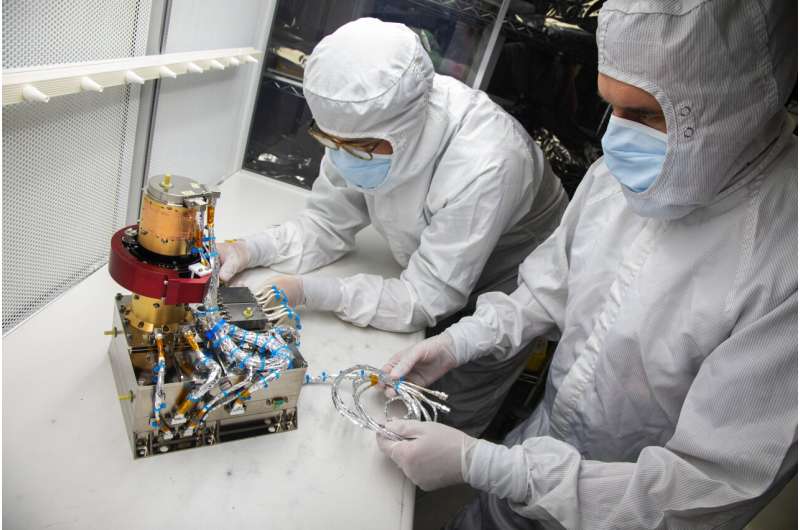The Southwest Research Institute has developed a groundbreaking Solar Wind Plasma Sensor (SWiPS) that will be integrated into a National Oceanic and Atmospheric Administration (NOAA) satellite to track space weather. This innovative instrument will provide real-time data on the solar wind, high-energy particles, and the interplanetary magnetic field, enabling better prediction of potentially disruptive space weather events. With this technology, we can better safeguard our critical infrastructure and protect the safety of astronauts. Space weather and solar wind are fascinating topics that can have profound impacts on our modern, technology-driven world.

A Revolutionary Sensor
The Solar Wind Plasma Sensor (SWiPS) developed by the Southwest Research Institute’s (SwRI) is new technology which will be a game changer in space weather monitoring. The device, a relatively simple and small item that is just over 5 feet (1.62 meters) long, is a type of sensor that can measure properties of solar ions — some fast ions associated with coronal mass ejections (CME).
A CME, on the other hand, is a colossal explosion of solar material that can interfere with our magnetic environment here on Earth and if strong enough produce large scale disturbances in our technology dependent society. SWiPS will provide real-world impact to predict and monitor these dangerous space weather events, by providing real-time data on the solar wind. That information could save power grids, GPS systems or even astronauts in the International Space Station from being knocked offline by an angry sun that gives no warning of when it’s about to erupt.
SWiPS implementation in the NOAA Satellite
The SWiPS sensor has already been integrated into the National Oceanic and Atmospheric Administration’s (NOAA) Space Weather Follow On-Lagrange 1 (SWFO-L1) satellite that is now in environmental testing. The SWFO-L1 satellite, due for launch in 2024, will fly at the L-1 point — about a million miles out on the sun-Earth line — to take images of the sun and directly measure solar wind speed, composition and other properties of space weather as it streams past.
WMO L1 orbits are positioned so that the SWFO-L1 satellite can provide advance warning of space weather events ahead of their arrival at Earth. Along with data from the SWFO-L1 magnetometer, another SwRI-led instrument to predict geomagnetic storm severity and other potentially disruptive space weather effects for NOAA.
Challenges Faced In COVID-19 Times
The development of the SWiPS sensor was a difficult road for the SwRI team, who were hampered by Covid-19. Since staff was mostly working remotely, the team had to adjust their design/fabrication processes around not being able to be physically together.
On top of that, The breakdown in supply chains endangered the project. Nevertheless, the persevered team of dedicated and talented engineers at SwRI designed, constructed and tested (culminating with a successful delivery) the flight instrument. The successful execution of this delivery reflects the dedication and creativity of the SwRI team, who completed a key SWFO-L1 instrument during an extraordinary time in our nation’s history.
